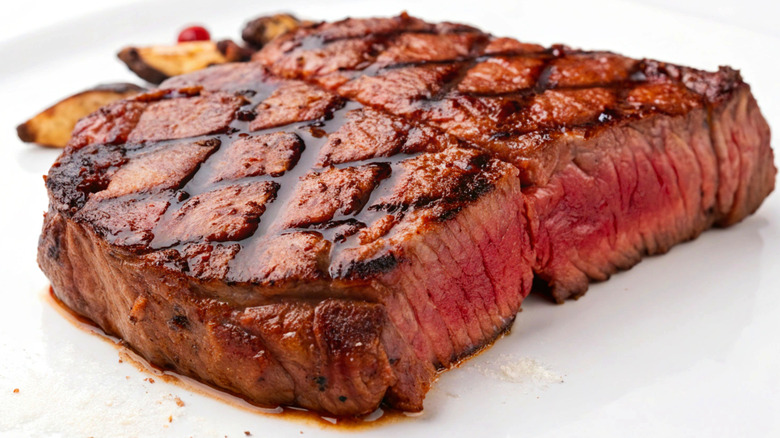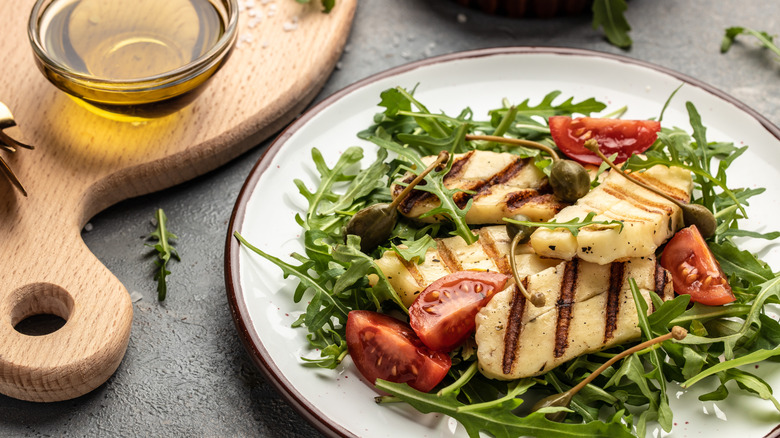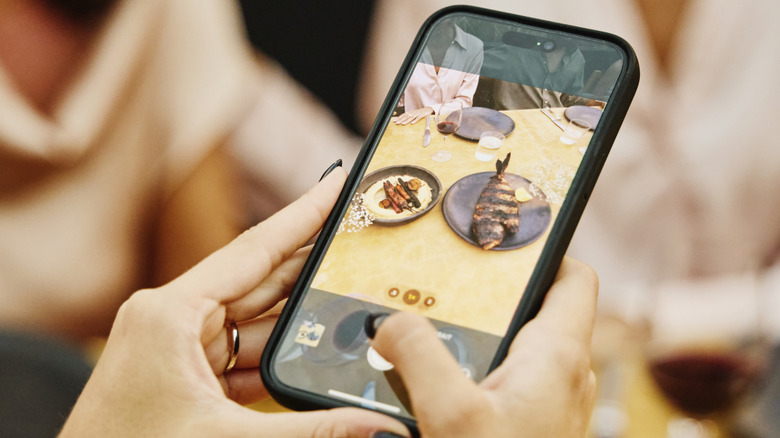What Fake Grill Marks Are Made With And Why They're Used
A staple of delicious grilling is beautiful char lines in rows or a grid. If steak, veggies, or even fruit have those grill marks, you know it's been freshly cooked over a fire just for you, right? Well, not exactly. Turns out, it's pretty straightforward to give food the look of being grilled — even if it never gets anywhere near an open flame.
It may come as a shock to hear that a lot of frozen entrees and fast food cuisines have fake grill lines. That's right — your McRib has false grill marks seared into it, and it's not even all rib meat! There are tons of tricks that restaurateurs and food stylists use to make food look just perfect. Food photographers even have substances they put on meat in commercials to make it glisten. The big question here is why do this, especially if the food tastes great anyway? Fake grill marks don't necessarily mean a food is going to taste bad, but it does mean it's trying to sell itself based on your own bias for authenticity.
Grill marks make food look more appetizing
For commercials, grill lines are usually made by hand with a searing machine or painted on. Luckily, that isn't what's served to you, but your burger might still have fake lines on it. Almost no fast food restaurants grill their food on site, so it arrives in-house with those lines already burned on. This makes customers feel like they're getting something fresh-grilled without restaurants needing to take time actually cooking it that way.
The marks are often pressed on with a rotary grilling machine in a factory that just sears the outside, rather than cooking the food entirely. Those marks remain even after it's later heated to safe, enjoyable levels in faster and cheaper ways. This is the same with many frozen entrees. Any smoky taste you may experience when eating is likely either an added flavoring or your mind tricking you when it sees those lines.
To put it simply, restaurants do this because it looks appetizing and tells you're brain you're eating something authentic. Sometimes, the more perfect and fake something looks, the tastier we perceive it. Using fake food techniques to make dishes look delicious isn't unique to grilled items, either. For example, Japanese restaurants display fake food in their front windows to entice customers inside. The key here is that it's illegal to advertise falsely. So, if a restaurant claims in writing that a dish is grilled on site, then you're more likely to get something with real char marks.
You can add fake grill marks to your own food
If you are a sucker for that crosshatched grill pattern and like doing food photography, it might be helpful for you to emulate these fake lines. There are a few ways you can pull this off, and some techniques don't even need specialized tools. If you're just after pretty photos for the gram, consider burning lines onto food with a red-hot wire or an electric charcoal starter. Be careful; these can get dangerously hot. You can also paint lines on with nail polish or eyeliner. Remember to make sure all the lines are parallel so they look realistic. Be aware, many see these tricks as wrong and deceitful, so take care with how you present your work.
Of course, you need to remember that most photography-ready food is pretty much inedible. If you want to actually eat the food, try using a method of cutting up a disposable metal cooking pan. Fold it so it has accordioned ridges, then place it in a skillet or pot and cook your meat and veggies on top of those ridges on high heat. You end up with burned-in lines without needing to spend money on a grill. As long as you don't decorate your home with fake food that your company might inadvertently eat, you should be able to impress guests without poisoning them.


